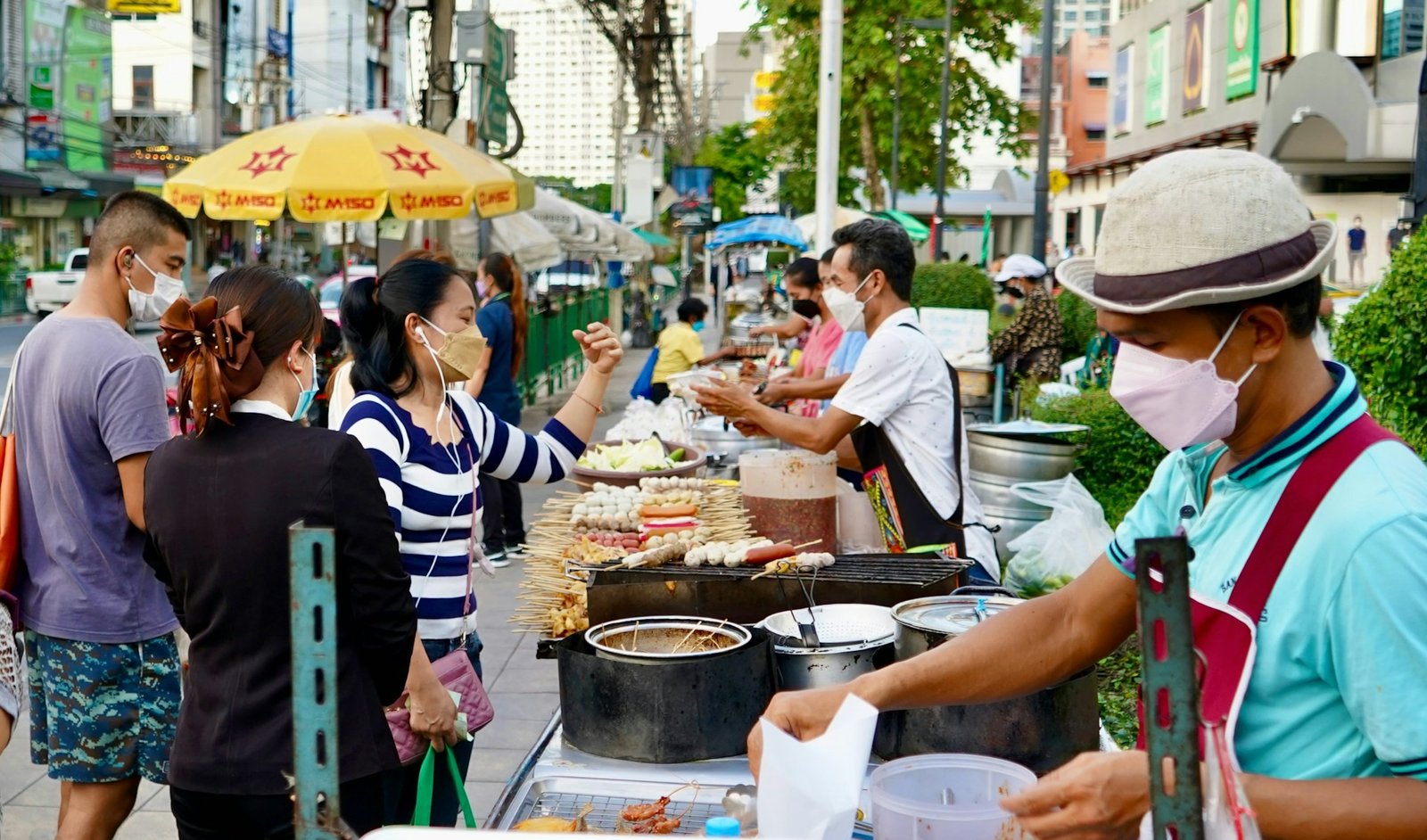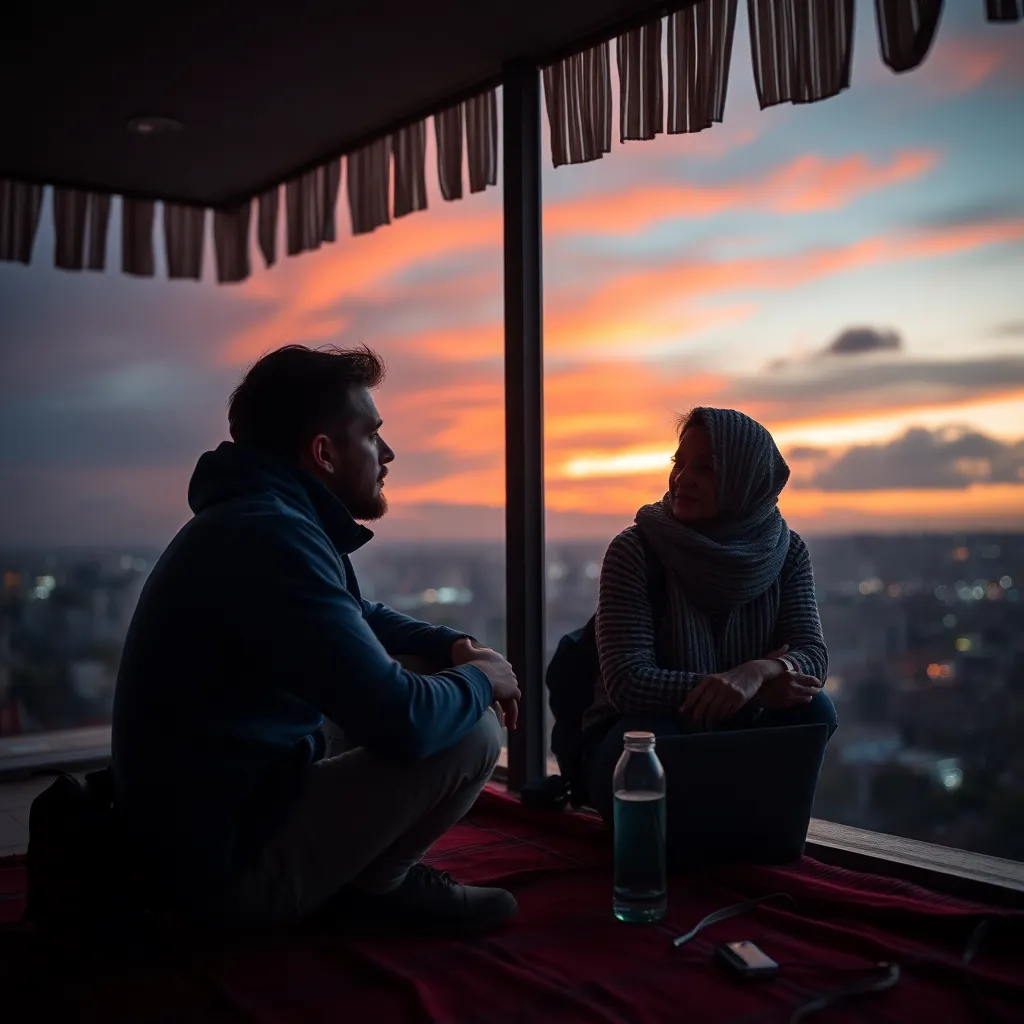As a digital nomad, you’ve got the world at your fingertips—new cities, new cultures, and, best of all, new flavors. There’s something magical about immersing yourself in a destination’s food scene, savoring dishes that locals adore, and discovering culinary gems that guidebooks often overlook. Eating like a local isn’t just about satisfying hunger; it’s about connecting with a place, its people, and its stories. Whether you’re working from a café in Chiang Mai or a co-working space in Lisbon, food can be your gateway to authentic experiences. In this guide, I’ll share practical tips, personal insights, and strategies to help you discover delicious, authentic cuisine while living abroad as a digital nomad.
Why Eating Like a Local Matters
Food is more than fuel—it’s a universal language. When you eat like a local, you’re not just tasting a dish; you’re stepping into a culture’s history, traditions, and daily life. For digital nomads, who often spend weeks or months in a single destination, food offers a way to feel grounded. It’s a chance to build routines, connect with locals, and create memories that linger long after the last bite.
Plus, let’s be honest: eating local is often cheaper, tastier, and more sustainable than sticking to tourist traps or chain restaurants. You’ll save money, support small businesses, and avoid the bland, overpriced meals that often come with “Westernized” menus. Ready to dig in? Let’s explore how to find authentic culinary experiences abroad.
Step 1: Do Your Homework Before You Go
Preparation is key to eating like a local. Before you arrive in a new destination, spend some time researching its food culture. Every country, and even regions within a country, has its own culinary identity. For example, Mexico’s Oaxaca is famous for its mole sauces, while northern Thailand is known for fiery som tam (papaya salad). Understanding these nuances helps you know what to seek out.
Research Tips:
- Read Blogs and Forums: Websites like Serious Eats or Eater often have city-specific guides written by locals or seasoned travelers. Look for articles on regional specialties or hidden gems.
- Check Social Media: Platforms like Instagram or TikTok are goldmines for food recommendations. Search hashtags like #BangkokEats or #LisbonFood to find posts from local foodies.
- Learn Key Dishes: Familiarize yourself with a few iconic dishes. In Vietnam, it might be phở or bánh mì. In Italy, it could be cacio e pepe in Rome or risotto in Milan. Knowing what’s authentic helps you avoid touristy knockoffs.
- Understand Food Etiquette: Some cultures have specific dining customs. In Japan, slurping noodles is a compliment to the chef, while in Morocco, eating with your hands is common for certain dishes.
A quick Google search or a scroll through Instagram posts from locals can reveal what’s trending in a city’s food scene. For example, a recent post I saw on Instagram highlighted a tiny taco stand in Mexico City that only serves al pastor tacos after midnight—definitely not in any guidebook!
Step 2: Follow the Locals, Not the Crowds
Tourist-heavy spots often serve watered-down versions of local cuisine at inflated prices. To find the real deal, go where the locals go. Here’s how:
Observe and Explore
- Look for Busy Spots: A bustling eatery with a line of locals is usually a good sign. In Southeast Asia, street food stalls with long queues at lunchtime often serve something delicious.
- Wander Residential Areas: Venture beyond the city center. Neighborhoods where locals live and work often have small, family-run restaurants with authentic dishes.
- Avoid English Menus: If a restaurant’s menu is in English or has pictures, it’s likely catering to tourists. Seek out places with handwritten or local-language menus for a more authentic experience.
Ask the Right People
- Chat with Your Host: If you’re staying in an Airbnb or a local guesthouse, ask your host for recommendations. They’ll often point you to their favorite spots.
- Talk to Co-Workers: If you’re using a co-working space, strike up a conversation with local freelancers or expats. They’ll know the best places to eat nearby.
- Engage with Vendors: At markets, chat with vendors about what they’re cooking or what they eat at home. They’re usually happy to share tips.
Use Technology Wisely
Apps like Yelp or TripAdvisor can be useful, but they’re often skewed toward tourists. Instead, try local apps or platforms. For example, in Japan, Tabelog is a go-to for restaurant reviews by locals. In Thailand, Wongnai is a popular choice. Filter reviews by local language to get a sense of what residents love.
Step 3: Embrace Street Food and Markets
Street food and local markets are the heart of authentic cuisine in many countries. They’re affordable, delicious, and offer a front-row seat to a culture’s food scene. As a digital nomad, markets are also great places to work remotely—grab a coffee, find a shady spot, and soak in the atmosphere.
Tips for Navigating Street Food
- Check for Cleanliness: Look for stalls with high turnover (food is fresh) and clean preparation areas. If locals are eating there, it’s usually a safe bet.
- Start Small: If you’re new to street food, try something familiar, like grilled skewers, before diving into more adventurous dishes.
- Know the Local Schedule: In some countries, like Spain, dinner is eaten late (9 PM or later). In others, like Vietnam, street food stalls may close by early evening.
Must-Visit Markets for Digital Nomads
Here’s a quick table of iconic food markets around the world that are nomad-friendly:
| City | Market | Must-Try Dish | Why Visit? |
|---|---|---|---|
| Bangkok, Thailand | Chatuchak Weekend Market | Mango sticky rice | Huge variety of Thai street food, plus shaded areas to work. |
| Mexico City, Mexico | Mercado de San Juan | Tacos de carnitas | Authentic Mexican flavors and a vibrant atmosphere. |
| Marrakech, Morocco | Jemaa el-Fnaa | Tagine with couscous | Lively evening market with storytelling and music alongside food stalls. |
| Istanbul, Turkey | Grand Bazaar | Döner kebab | Historic setting with affordable, delicious Turkish dishes. |
| Hanoi, Vietnam | Dong Xuan Market | Bún chả (grilled pork noodles) | Bustling market with cheap eats and a glimpse into daily life. |
Markets are also a great way to stock up on fresh ingredients if you’re staying in an apartment. You can practice your language skills, haggle a bit, and maybe even learn a recipe or two from a friendly vendor.
Step 4: Take a Cooking Class or Food Tour
One of the best ways to understand a cuisine is to learn how to make it. Cooking classes and food tours are immersive experiences that connect you with local chefs, home cooks, or food enthusiasts. They’re also a fun way to meet other travelers or locals.
Why Take a Cooking Class?
- Learn Authentic Recipes: You’ll get hands-on experience making dishes like pad thai, handmade pasta, or mole poblano.
- Cultural Insights: Instructors often share stories about the dish’s history or its role in family traditions.
- Take Skills Home: You’ll leave with recipes you can recreate anywhere, turning your kitchen into a global food hub.
For example, in Bali, I joined a cooking class at a local warung (small restaurant) and learned to make nasi goreng. The chef shared tips on balancing sweet, sour, and spicy flavors, and I still use her recipe today.
Finding the Right Class or Tour
- Look for Small Groups: Smaller classes (under 10 people) offer more hands-on time and personal attention.
- Check Reviews: Platforms like Cookly list cooking classes worldwide with user reviews.
- Opt for Local-Led Tours: Avoid generic tour companies. Look for guides who are passionate about their city’s food scene, like those offering tours through local markets or hidden eateries.
Step 5: Adapt to Local Dining Customs
Every culture has its own dining etiquette, and respecting these customs shows appreciation for the local way of life. Here are a few examples:
- In Thailand: Don’t stick your fork in your mouth—it’s used to push food onto a spoon.
- In Italy: Avoid asking for extra cheese unless it’s offered, as it can be seen as interfering with the chef’s vision.
- In India: Eating with your right hand is customary in many regions, especially for traditional meals like thali.
Adapting to these customs not only makes you a respectful guest but also helps you blend in, making locals more likely to share their favorite food spots with you.
Step 6: Balance Work and Food Adventures
As a digital nomad, your schedule is likely a mix of work and exploration. The good news? Food can fit seamlessly into your lifestyle. Here’s how to balance the two:
- Work from Food-Focused Spaces: Many cafés and restaurants in nomad-friendly cities like Medellín or Budapest offer reliable Wi-Fi and great food. Look for spots with local vibes, like a pastelaría in Portugal serving pastéis de nata.
- Plan Food Outings: Schedule market visits or cooking classes on weekends or slower workdays to minimize disruptions to your workflow.
- Batch Cook Local Dishes: If you have access to a kitchen, try cooking a big batch of a local dish (like curry or paella) to save time and money during the week.
For more tips on balancing work and life abroad, check out our guide on living abroad as a digital nomad.
Step 7: Stay Safe and Healthy
While exploring local cuisine is exciting, food safety is crucial, especially in unfamiliar destinations. Here are some tips to stay healthy:
- Drink Bottled Water: In countries where tap water isn’t safe, stick to bottled or filtered water, even for brushing your teeth.
- Check Food Hygiene: Ensure meat is cooked through, and avoid raw foods in places with questionable sanitation.
- Ease into Spicy Foods: If you’re not used to spicy cuisine (like in Thailand or India), start with milder dishes to avoid stomach issues.
- Pack Medications: Carry over-the-counter remedies for food poisoning or upset stomachs, just in case.
Step 8: Document and Share Your Food Journey
As a digital nomad, you’re likely already sharing your travels online. Why not include your food adventures? Snap photos of your meals, write about the stories behind them, or share recipes on your blog or social media. Not only does this preserve your memories, but it also inspires others to explore authentic cuisine.
For example, I started posting about my food experiences in Colombia—think arepas stuffed with queso fresco—and got tons of recommendations from locals. It turned into a mini food tour of Bogotá, all thanks to a single post!
Final Thoughts: Food as a Connection to Place
Eating like a local is one of the most rewarding parts of living abroad as a digital nomad. It’s a chance to taste the soul of a place, from the sizzling street food of Bangkok to the hearty stews of Eastern Europe. By researching, exploring, and embracing local customs, you’ll uncover culinary experiences that make your travels unforgettable. So, grab your fork (or chopsticks), step out of your comfort zone, and let food lead the way.
What’s the best local dish you’ve tried abroad? Share your stories in the comments.







